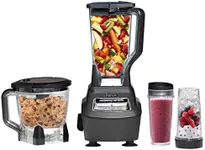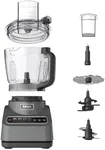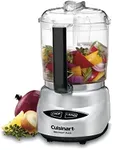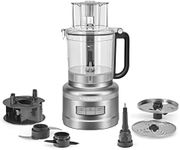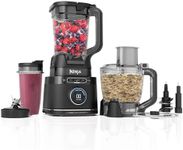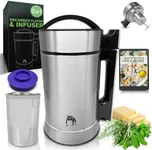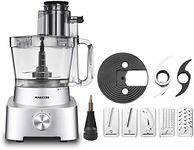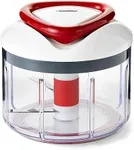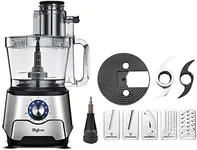Buying Guide for the Best Food Processor Rating
Choosing the right food processor can make a significant difference in your kitchen experience. A food processor can help you with a variety of tasks such as chopping, slicing, grating, and pureeing, making meal preparation faster and more efficient. To find the best food processor for your needs, it's important to consider several key specifications. Understanding these specs will help you make an informed decision and ensure that the food processor you choose will meet your cooking requirements and preferences.Power (Wattage)Power, measured in watts, indicates the strength of the food processor's motor. A higher wattage means the processor can handle tougher tasks like kneading dough or chopping hard vegetables more efficiently. For light tasks like chopping herbs or making sauces, a lower wattage (around 400-600 watts) may suffice. For more demanding tasks, look for a processor with 700 watts or more. Consider your typical cooking needs to determine the right power level for you.
CapacityCapacity refers to the size of the food processor's bowl, usually measured in cups. A larger capacity allows you to process more food at once, which is useful for big families or batch cooking. Small processors (around 3-5 cups) are suitable for small tasks and single servings. Medium processors (6-9 cups) are versatile for most home cooks. Large processors (10 cups or more) are ideal for large quantities and heavy-duty tasks. Choose a capacity that matches your cooking volume.
Blades and AttachmentsBlades and attachments determine the versatility of the food processor. Common attachments include slicing discs, shredding discs, dough blades, and chopping blades. More attachments mean more functions, such as grating cheese, slicing vegetables, or kneading dough. If you plan to use the processor for a variety of tasks, look for a model with multiple attachments. If you have specific needs, ensure the processor includes the necessary blades.
Speed SettingsSpeed settings allow you to control the processing speed. Basic models may have one or two speeds, while advanced models offer multiple speed options. Variable speeds provide more control over the texture and consistency of your food. For general use, a few speed settings are usually sufficient. If you need precise control for different recipes, look for a processor with multiple speed options.
Ease of CleaningEase of cleaning is an important factor, especially if you use the food processor frequently. Look for models with dishwasher-safe parts to save time and effort. Some processors have fewer crevices and detachable parts, making them easier to clean by hand. Consider how much time you are willing to spend on cleaning and choose a model that fits your preference.
Size and StorageThe size of the food processor affects how much counter space it will occupy and how easy it is to store. Compact models are easier to store and suitable for small kitchens, but may have limited capacity. Larger models offer more capacity and features but require more storage space. Consider your kitchen space and storage options when choosing the size of your food processor.
Build Quality and DurabilityBuild quality and durability determine how long the food processor will last and how well it performs over time. Look for models made with high-quality materials like stainless steel and sturdy plastic. Check user reviews and ratings to gauge the reliability and longevity of the processor. If you plan to use the processor frequently, investing in a durable model will provide better value in the long run.
